Tom's Hardware Verdict
Sapphire's RX 7700 XT Pure delivers good performance and noise levels, with an attractive aesthetic. And while the RX 7800 XT delivers more bang for the buck, you won't find similar performance in a quieter card for less money.
Pros
- +
Excellent cooling and noise levels
- +
Good 1440p and 1080p rasterization performance
- +
Attractive design and aesthetics
Cons
- -
AMD's too-high MSRP and proximity to 7800 XT
- -
Lacking in DXR and AI performance
- -
Mediocre overall efficiency
- -
Red is the only lighting option, no RGB
Why you can trust Tom's Hardware
Sapphire's RX 7700 XT Pure is a great option for anyone that wants a break from the typical gunmetal or black themed graphics cards. If that's what you're after, you want AMD's 7700 XT GPU, and you're willing to pay $20 extra, read no further: This is the card for you. Otherwise, it has the the same performance and the same benefits and drawback as any other Radeon RX 7700 XT.
Specifically, it's priced far too close to the faster RX 7800 XT to make much sense, and we'd really like to see at least a $50 price cut. That would also bring it in line with the current RX 6800 pricing, a previous generation GPU that offers a similar level level of performance, even if it's missing some of the newer features like AV1 encoding support and DisplayPort 2.1 outputs. In short, the 7700 XT doesn't make our list of the best graphics cards, but a price cut could easily change things.
Note that there's no Made By AMD (MBA) reference design for the RX 7700 XT, so all the cards are third-party custom designs. Our initial review of the GPU used an XFX QICK 319 card, which comes with a factory overclock and thus ends up delivering effectively identical performance to the Sapphire Pure model. But aesthetics, fans, and coolers can make a difference as well. Here's a rundown of the specifications, including other relevant GPUs.
| Graphics Card | RX 7700 XT Sapphire | RX 7700 XT XFX | RX 7700 XT | RX 7800 XT | RTX 4060 Ti 16GB | RTX 4060 Ti | RX 6800 | RX 6800 XT |
|---|---|---|---|---|---|---|---|---|
| Architecture | Navi 32 | Navi 32 | Navi 32 | Navi 32 | AD106 | AD106 | Navi 21 | Navi 21 |
| Process Technology | TSMC N5 + N6 | TSMC N5 + N6 | TSMC N5 + N6 | TSMC N5 + N6 | TSMC 4N | TSMC 4N | TSMC N7 | TSMC N7 |
| Transistors (Billion) | 28.1 + 4x 2.05 | 28.1 + 4x 2.05 | 28.1 + 3x 2.05 | 28.1 + 4x 2.05 | 22.9 | 22.9 | 26.8 | 26.8 |
| Die size (mm^2) | 200 + 150 | 200 + 150 | 200 + 113 | 200 + 150 | 187.8 | 187.8 | 519 | 519 |
| SMs / CUs / Xe-Cores | 54 | 54 | 54 | 60 | 34 | 34 | 60 | 72 |
| GPU Cores (Shaders) | 3456 | 3456 | 3456 | 3840 | 4352 | 4352 | 3840 | 4608 |
| Tensor / AI Cores | 108 | 108 | 108 | 120 | 136 | 136 | N/A | N/A |
| Ray Tracing "Cores" | 54 | 54 | 54 | 60 | 34 | 34 | 60 | 72 |
| Boost Clock (MHz) | 2584 | 2599 | 2544 | 2430 | 2535 | 2535 | 2105 | 2250 |
| VRAM Speed (Gbps) | 18 | 18 | 18 | 19.5 | 18 | 18 | 16 | 16 |
| VRAM (GB) | 12 | 12 | 12 | 16 | 16 | 8 | 16 | 16 |
| VRAM Bus Width | 192 | 192 | 192 | 256 | 128 | 128 | 256 | 256 |
| L2 / Infinity Cache | 48 | 48 | 48 | 64 | 32 | 32 | 128 | 128 |
| ROPs | 96 | 96 | 96 | 96 | 48 | 48 | 96 | 128 |
| TMUs | 216 | 216 | 216 | 240 | 136 | 136 | 240 | 288 |
| TFLOPS FP32 (Boost) | 35.7 | 35.9 | 35.2 | 37.3 | 22.1 | 22.1 | 16.2 | 20.7 |
| TFLOPS FP16 (FP8) | 71.4 | 71.8 | 70.4 | 74.6 | 177 (353) | 177 (353) | 32.4 | 41.4 |
| Bandwidth (GBps) | 432 | 432 | 432 | 624 | 288 | 288 | 512 | 512 |
| TDP (watts) | 240 | 245 | 245 | 263 | 160 | 160 | 250 | 300 |
| Launch Date | Sep 2023 | Sep 2023 | Sep 2023 | Sep 2023 | Jul 2023 | May 2023 | Nov 2020 | Nov 2020 |
| Launch Price | $449 | $449 | $449 | $499 | $499 | $399 | $579 | $649 |
| Online Price | $470 | $450 | $450 | $500 | $450 | $370 | $400 | $500 |
Officially, Sapphire lists a $469 MSRP for this card, $20 more than the base RX 7700 XT price. You're basically paying $20 for the change in aesthetics, with a bit of red lighting as a bonus. Yes, you read that correctly: There's no RGB lighting. Instead, Sapphire provides just a red backlit logo (which can be turned on or off via a switch on the card).
Besides the cooler and appearance of the card, there's not much to set it apart from the XFX model we've already reviewed. Sapphire provides a 2584 MHz boost clock, and XFX provides 2599 MHz, compared to a reference 2544 MHz spec. On paper, that means a 1.5% overclock, and a 0.6% lower OC than XFX — both of those are essentially margin of error. But you also get potentially better cooling, and that could be a much stronger selling point.
AMD's RX 7700 XT ends up competing with the RTX 4060 Ti 16GB on price, while coming in $50 higher than the 8GB variant. You get more VRAM and bandwidth from the 7700 XT, but the usual reduction in ray tracing and AI performance and the lack of Nvidia-specific features like DLSS.
Sapphire RX 7700 XT Pure Overview
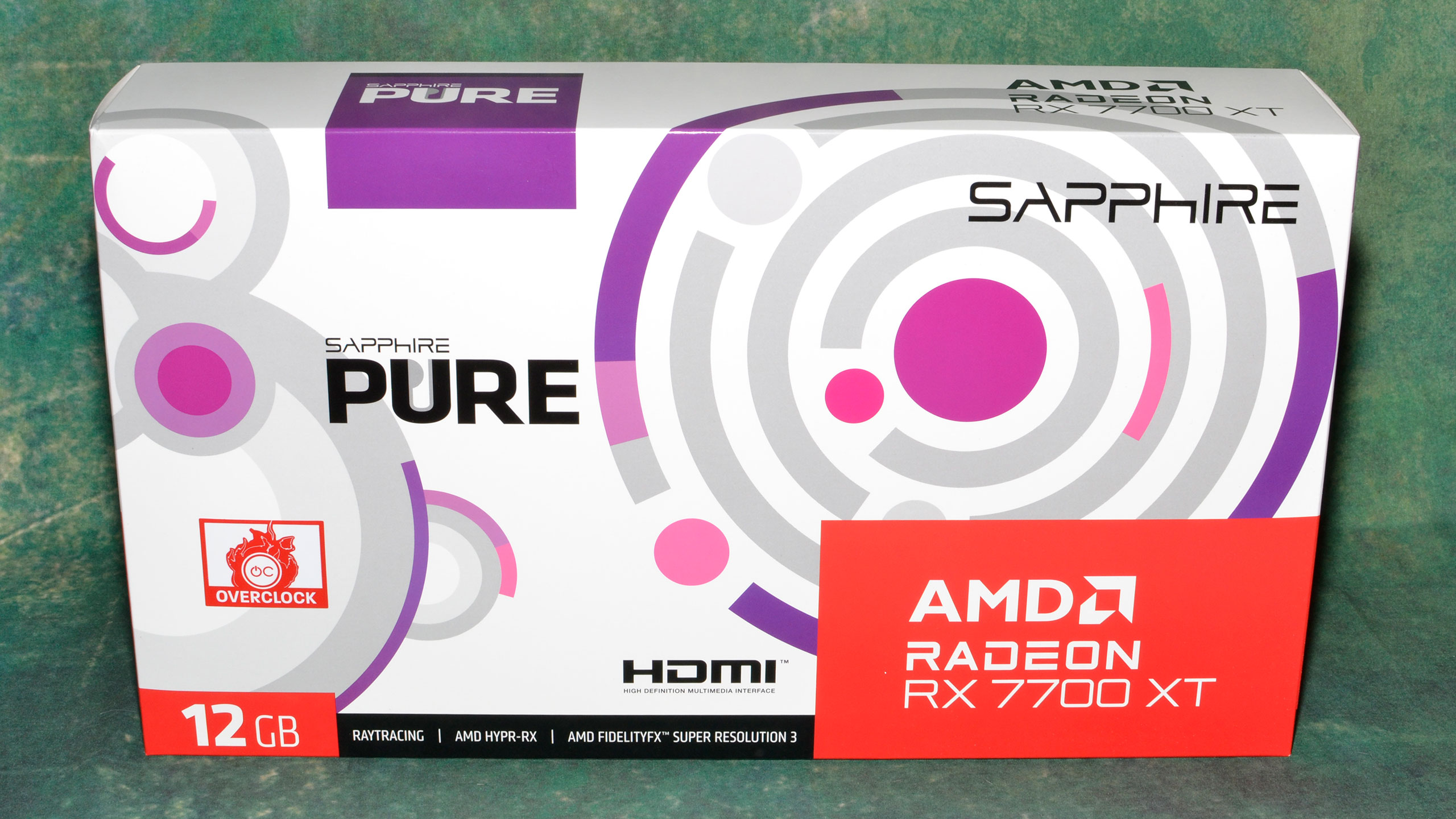
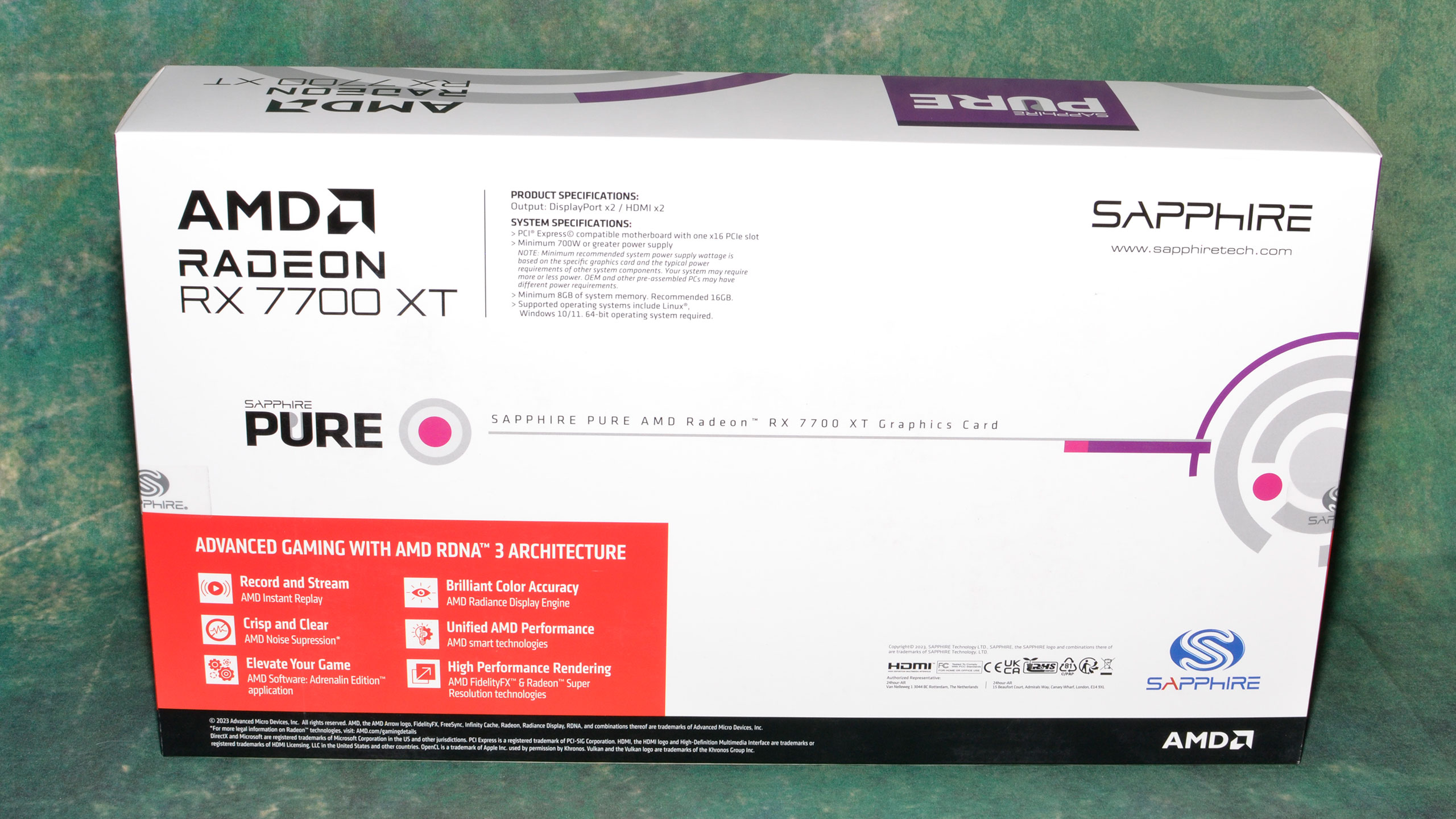
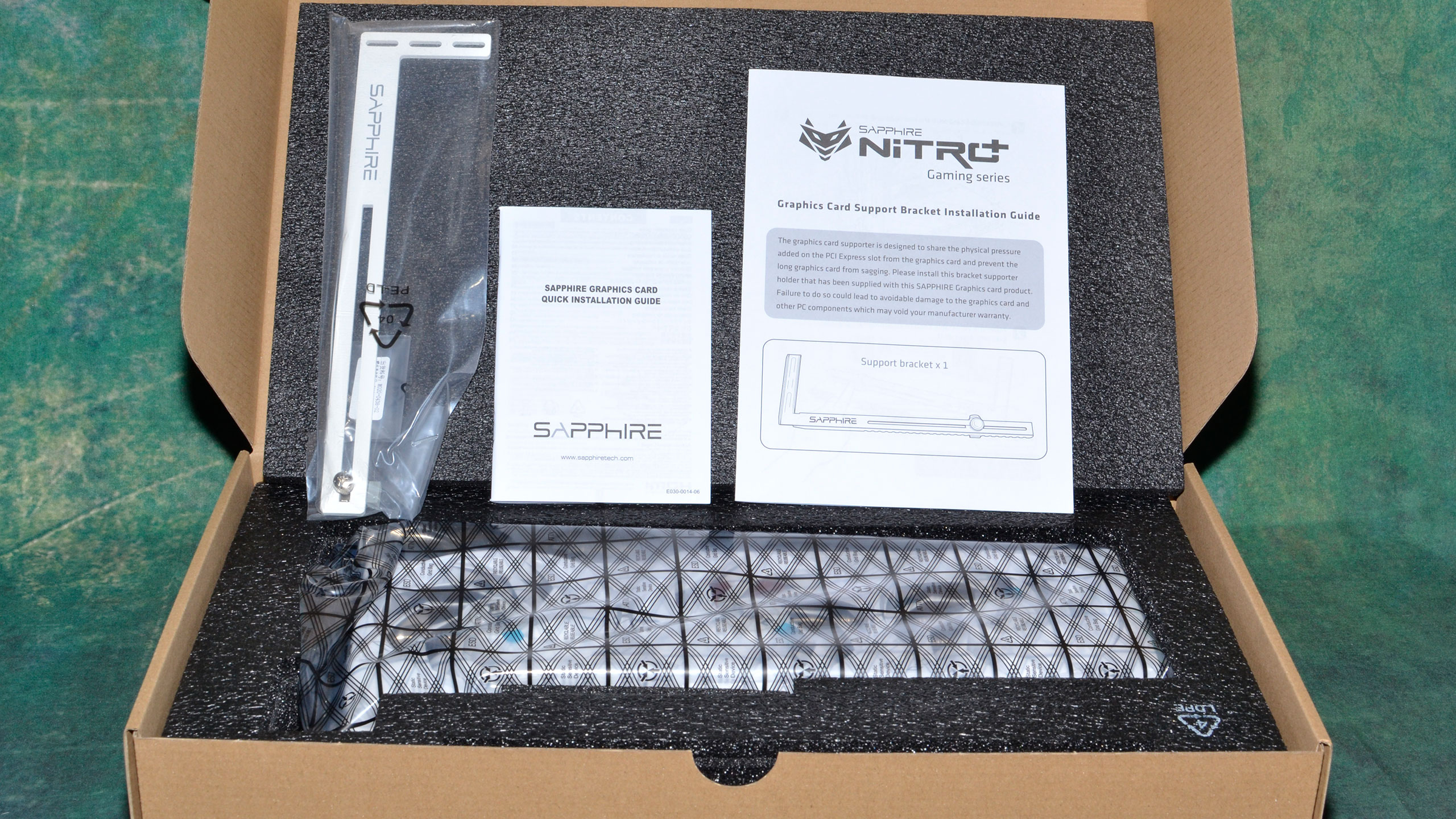
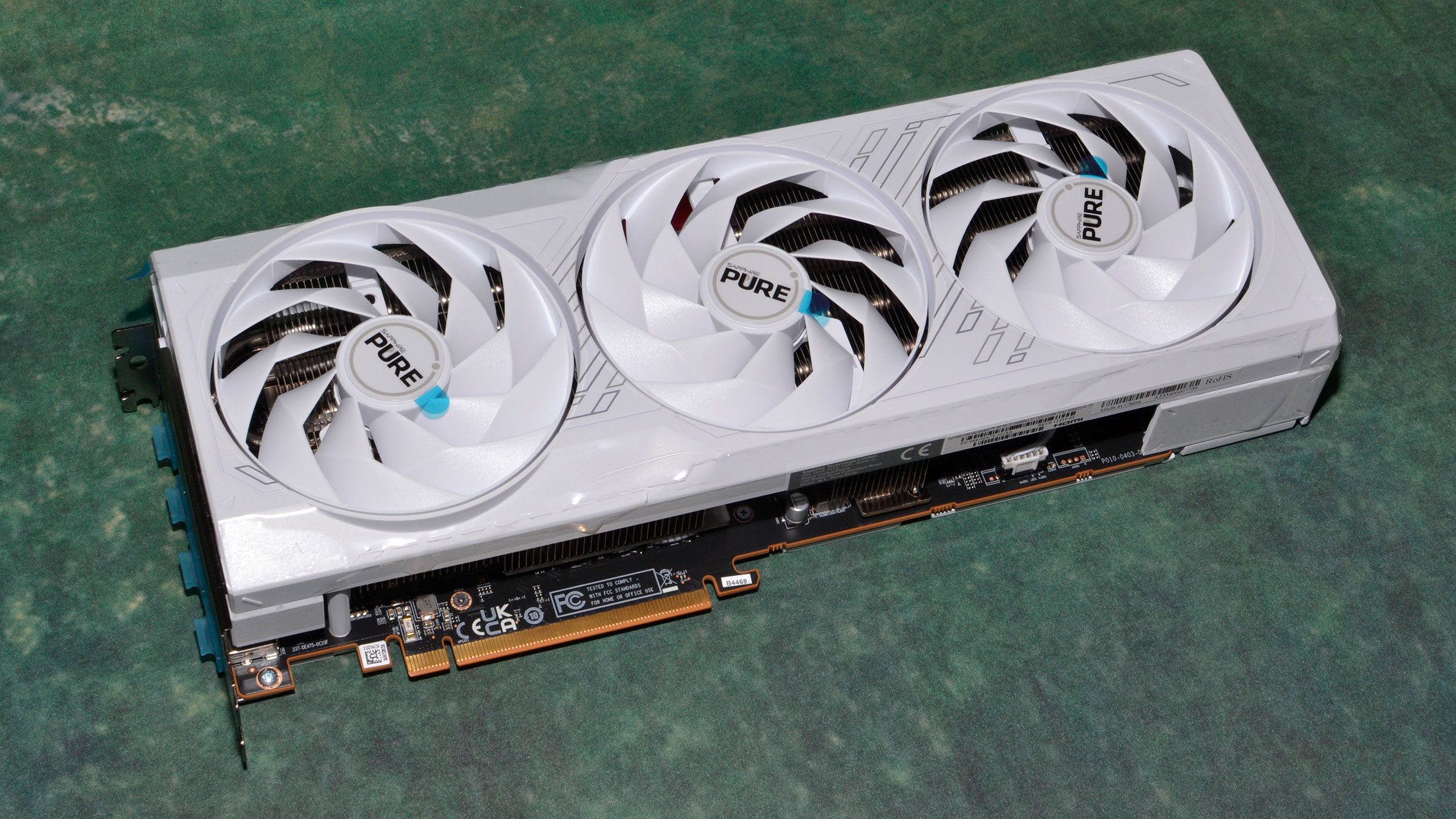
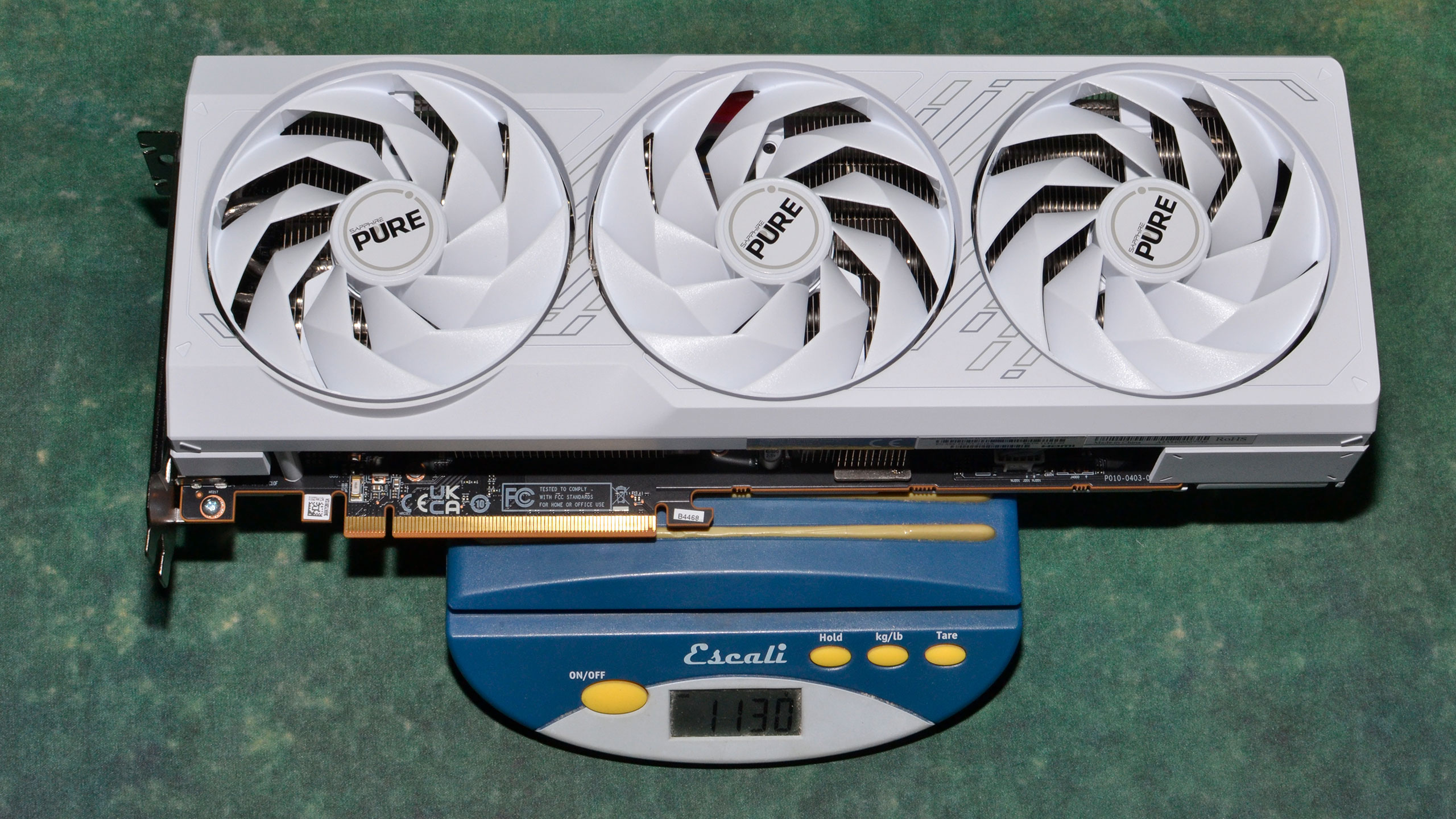
The Sapphire RX 7700 XT Pure looks like it should be a top-tier solution for the base GPU, but the specs say otherwise. This is a minor step up from a reference card, with a negligible overclock but some decent cooling. We're still a bit surprised at the lack of RGB lighting — would it really have been too much to include RGB LEDs instead of red LEDs? Team Red gamers may not care, but if anyone wanted to go with an alternative lighting scheme, the white cooler shroud would have been seemingly the perfect canvas.
The packaging looks far more colorful, with purple and pink designs on a white box. Inside the box are the usual small installation guide, a white support bracket (still a bit finnicky to install, if you use it), and a manual for the bracket that references the Nitro+ gaming series of Sapphire cards. We tested a Sapphire RX 6950X Nitro+ Pure in the past, and now we have a lower-tier Pure card with the RX 7700 XT.
We also recently reviewed the Sapphire RX 7800 XT Nitro+, which has the more typical gunmetal aesthetics and full RGB lighting. Superficially, there are a lot of similarities between that card and the 7700 XT Pure, but there are clear differences under the shroud. The Sapphire RX 7700 XT Pure measures 322x128x51 mm, so, it's fractionally longer than the Nitro+ but also about 1cm shorter and thinner. It's also much lighter, at 1130g, 473g less than the more potent Sapphire offering.
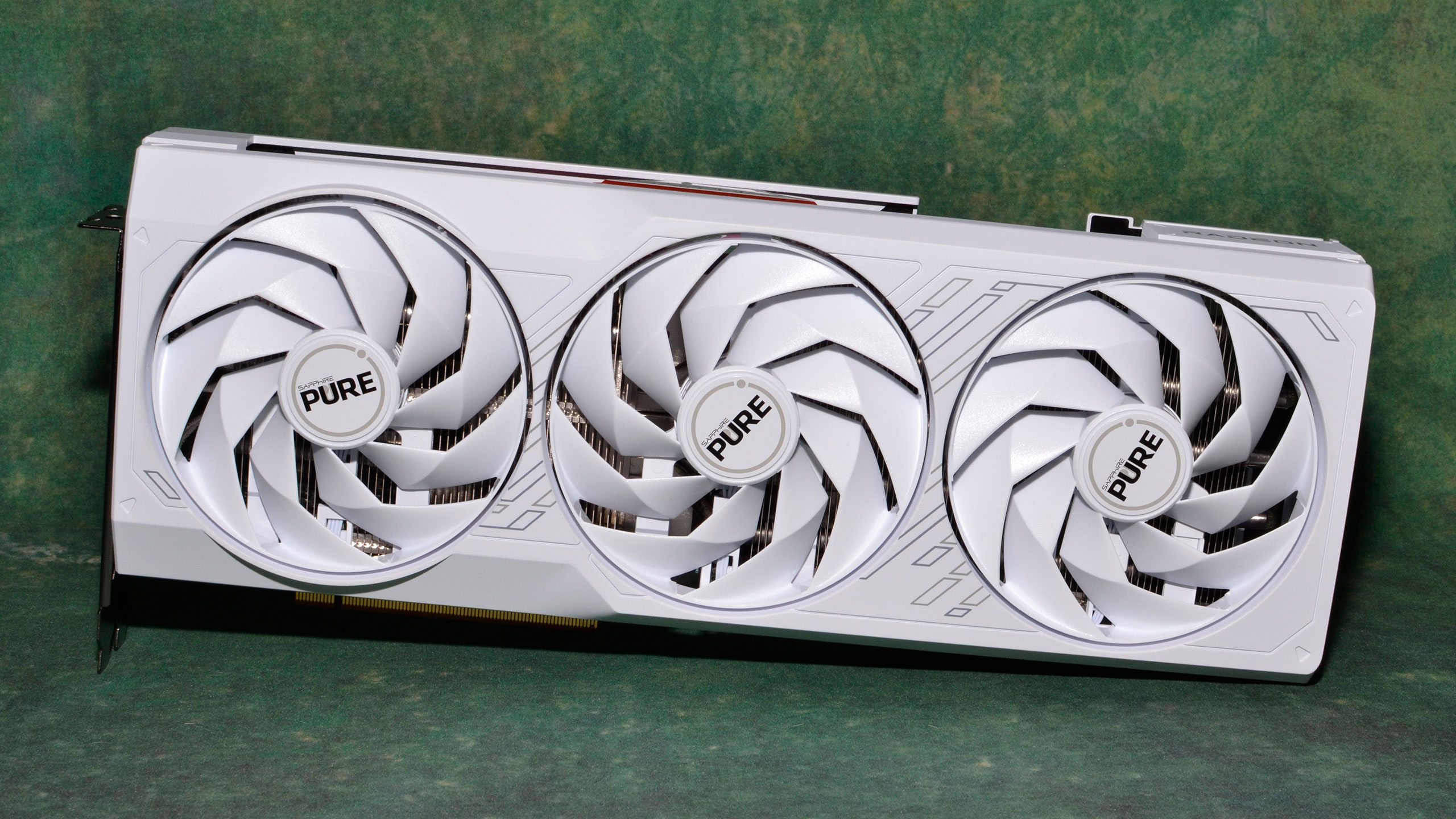



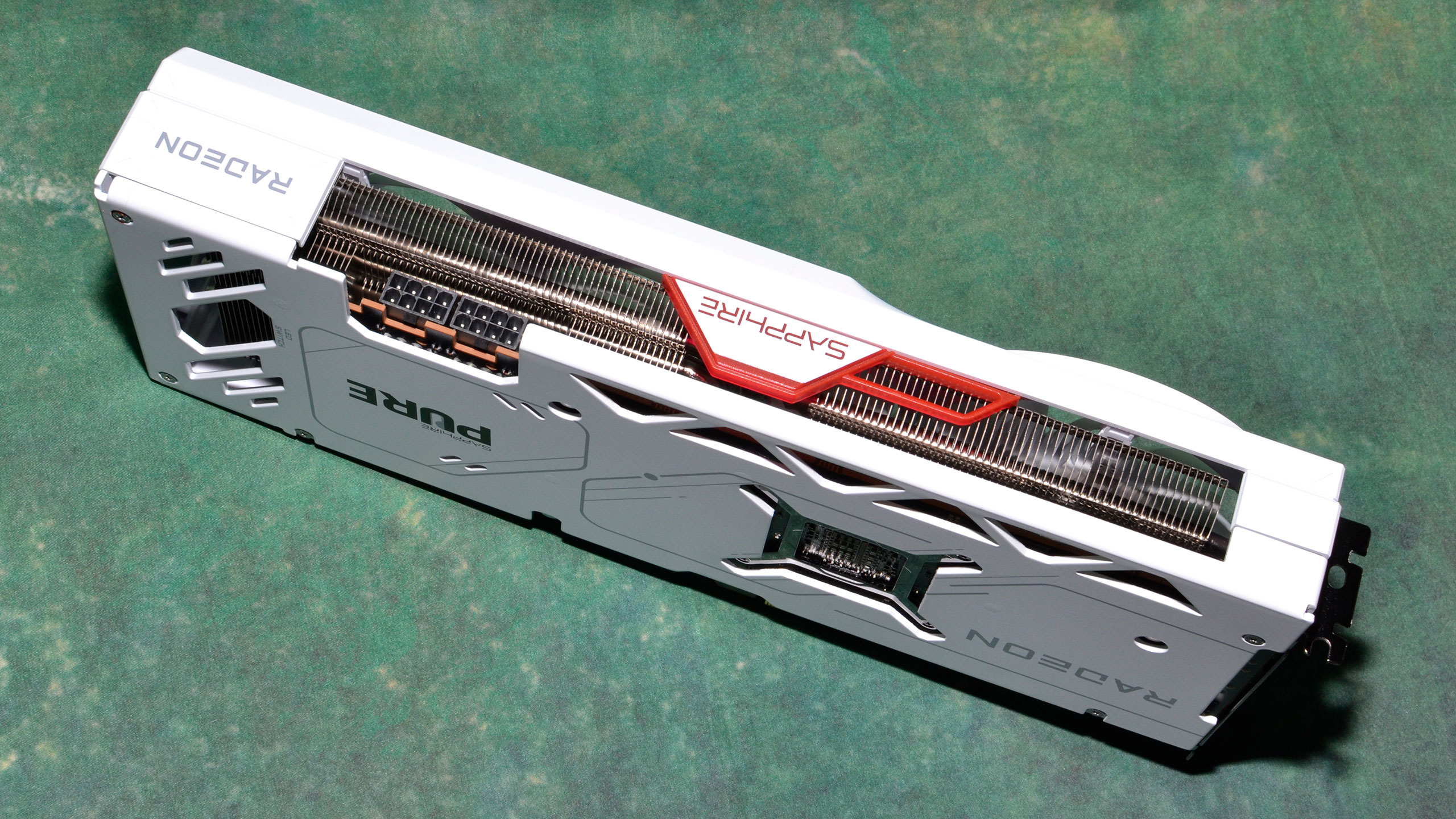
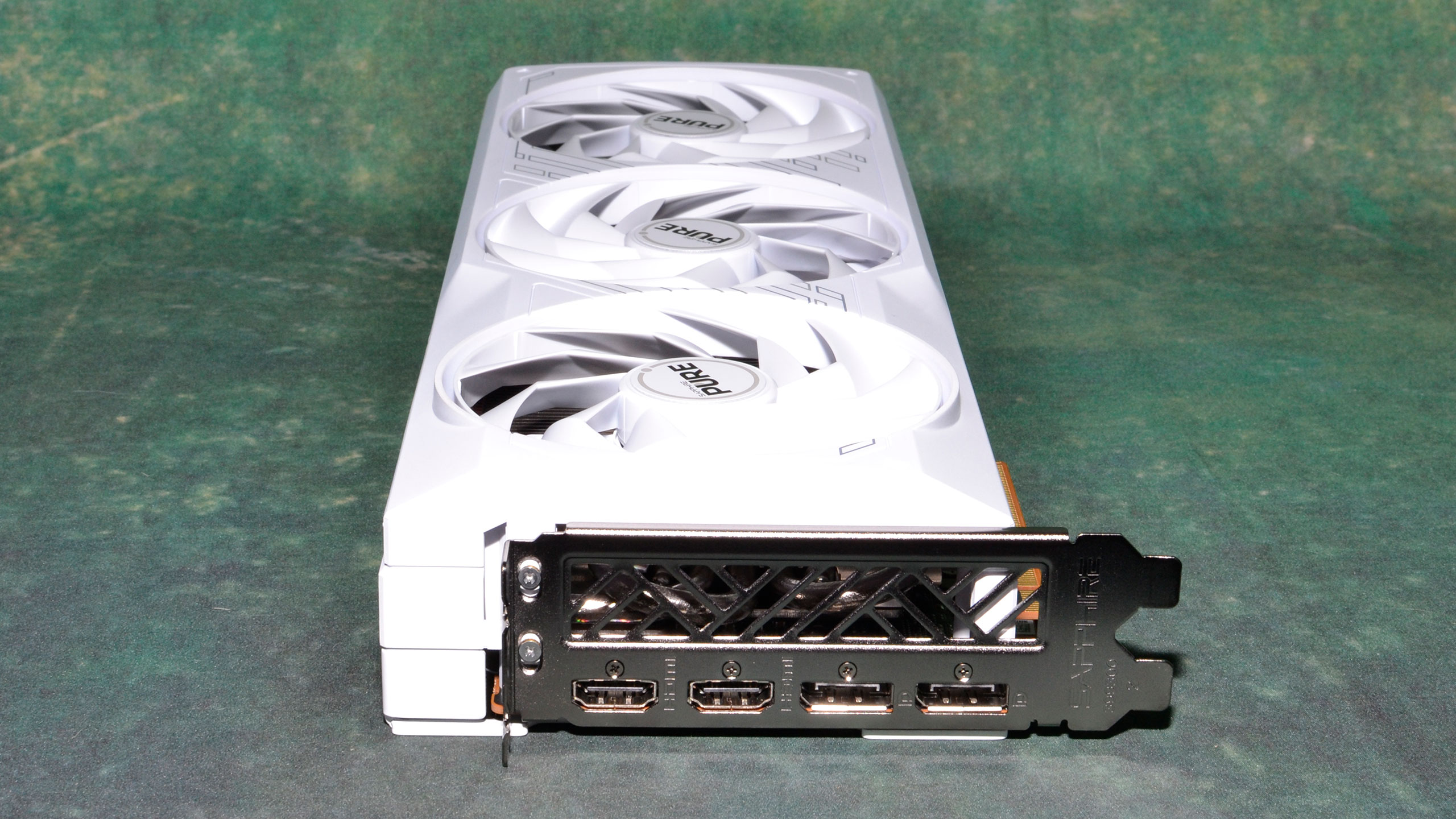

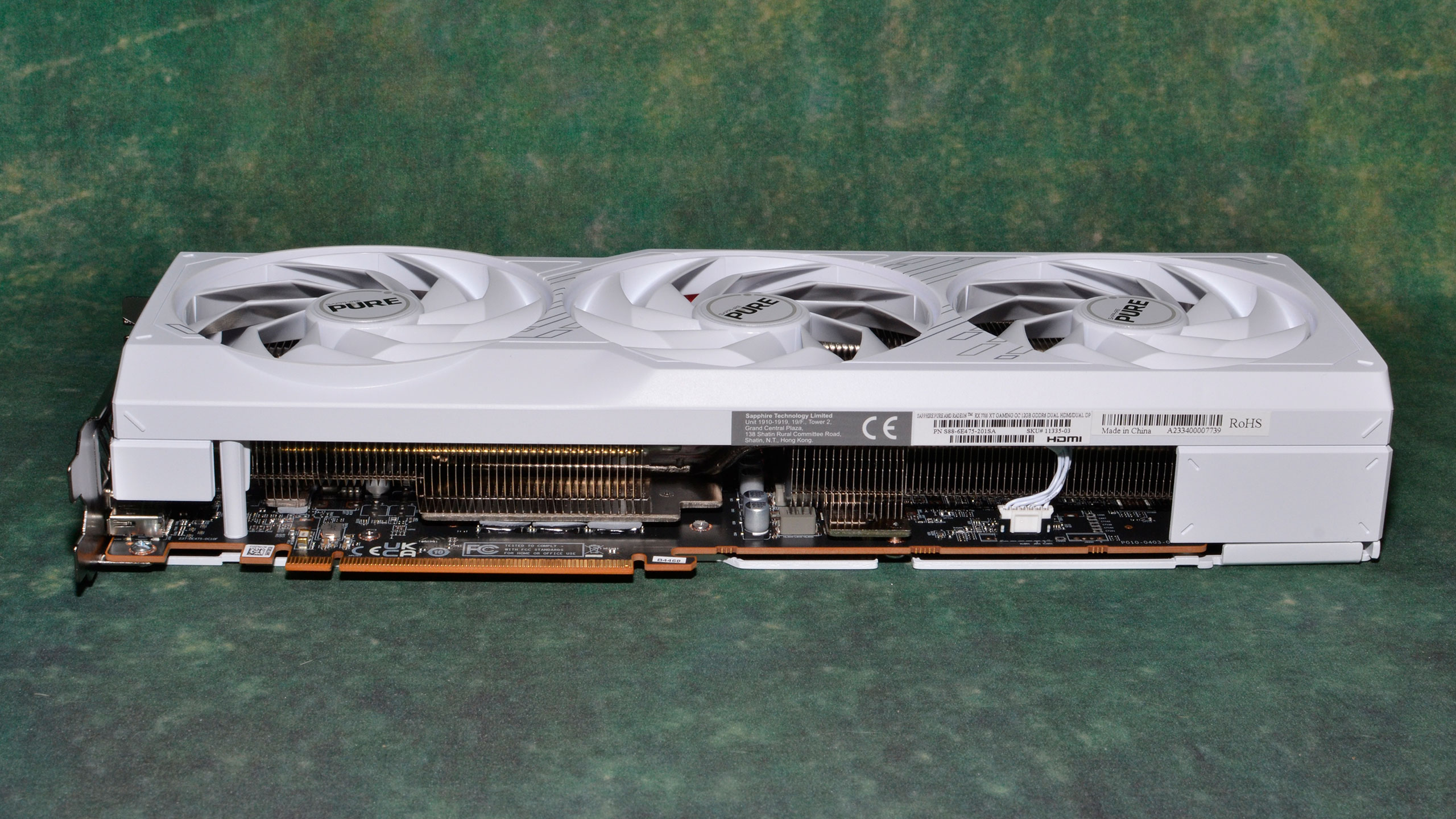

The fans are the same "Angular Velocity Fan Blade" design, however, just in white this time. Sapphire's latest fans have proven very capable with the RX 7900 XT and RX 7900 XTX, as well as the 7800 XT, and they work just as well here with the "lesser" RX 7700 XT. As we'll see later, cooling and noise levels are very much a strong point for the 7700 XT Pure.
Power requirements for Sapphire's card consist of dual 8-pin connectors. That gives a lot of potential headroom, with up to 375W total power from the PEG connections, plus the PCIe x16 slot. However, Sapphire lists a TBP (Total Board Power) of 240W, 5W lower than the official reference spec. The maximum average power draw we measured while gaming was right on target, though lighter games required less power.
Display outputs consist of dual HDMI 2.1 ports and dual DisplayPort 2.1 UHBR13.5 outputs. HDMI 2.1 offers a peak data rate of 42 Gbps, while DP2.1 UHBR13.5 offers a peak data rate of 52.22 Gbps. Either way, you get up to 4K 240 Hz support with DSC (Display Stream Compression), though DP2.1 can go higher if needed. For example, the Samsung Odyssey Neo G9 DUHD needs the extra bandwidth for full resolution doublewide 7680x2160 240 Hz support, even with DSC. Not that many games won't come anywhere near 240 fps at that resolution using currently available hardware.
Sapphire RX 7700 XT Pure Test Setup
We updated our GPU test PC at the end of last year with a Core i9-13900K, and for third-party (post-launch) graphics card reviews, we'll stick with just that system. We also skip some of the extra tests that we run for launch reviews, like lower and higher resolutions, depending on the GPU, as well as stuff like AI and professional workloads.
You can check our GPU benchmarks hierarchy for a broader view of how performance stacks up against other chips, or refer to the AMD RX 7700 XT review for the professional, AI, and other resolution tests. As you'd expect, the Sapphire Pure card matches the XFX card in our 1080p ultra and 1440p ultra gaming benchmarks.
TOM'S HARDWARE 2023 Gaming PC
Intel Core i9-13900K
MSI MEG Z790 Ace DDR5
G.Skill Trident Z5 2x16GB DDR5-6600 CL34
Sabrent Rocket 4 Plus-G 4TB
be quiet! 1500W Dark Power Pro 12
Cooler Master PL360 Flux
Windows 11 Pro 64-bit
GRAPHICS CARDS
Sapphire RX 7700 XT Pure
XFX RX 7700 XT QICK 319
AMD RX 7900 XT
AMD RX 7800 XT
AMD RX 7600
AMD RX 6800
AMD RX 6750 XT
Nvidia RTX 4070 Ti
Nvidia RTX 4070
Nvidia RTX 4060 Ti 16GB
Nvidia RTX 4060 Ti
Nvidia RTX 4060
We're using AMD's release 23.9.1 drivers for this review (23.9.2 came out just after testing was finished), which should be similar to the preview launch drivers in performance. The results from other cards are from the past few months of testing, with a few updates where we noticed larger changes.
We're including a selection of current-generation and previous-generation hardware in our charts, including cards that are one or two steps up or down from the RX 7700 XT. Of course, you can refer to our complete GPU benchmarks hierarchy to see the bigger picture of how performance stacks up against older cards.
Our current test suite consists of 15 games, nine of which are tested in pure rasterization mode — whether or not the game supports DirectX Raytracing (DXR) — and six of which are tested with DXR features enabled. While many of the games in our test suite support upscaling, that's not a primary factor in our testing as we stick with native rendering in all cases.
We're testing the Sapphire RX 7700 XT Pure at 1080p ultra and 1440p ultra, basically at maxed settings (though MSAA is left off in RDR2 as an example). If you want 1080p medium and 4K ultra results, check those links for the results from our initial 7700 XT testing.
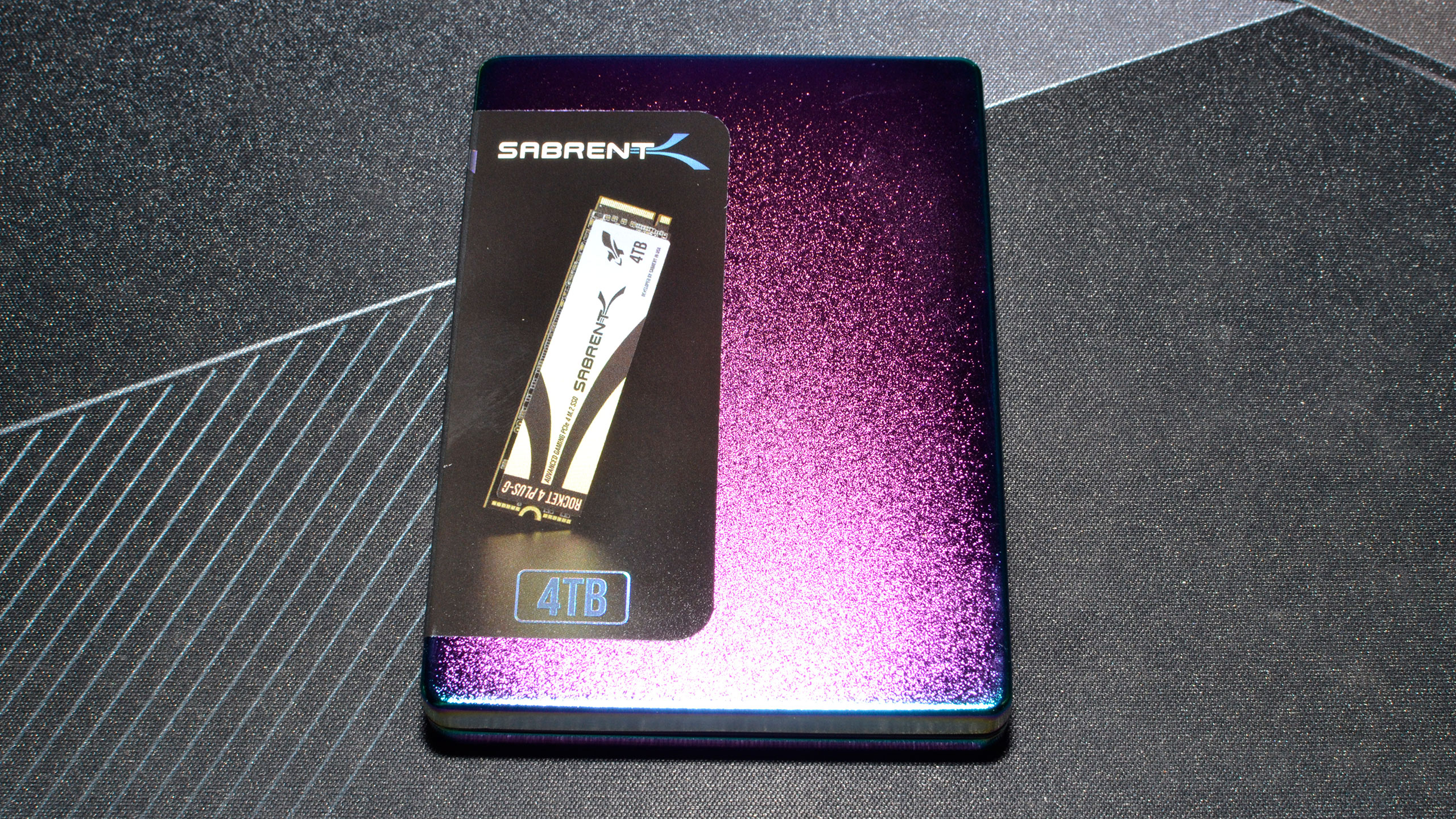
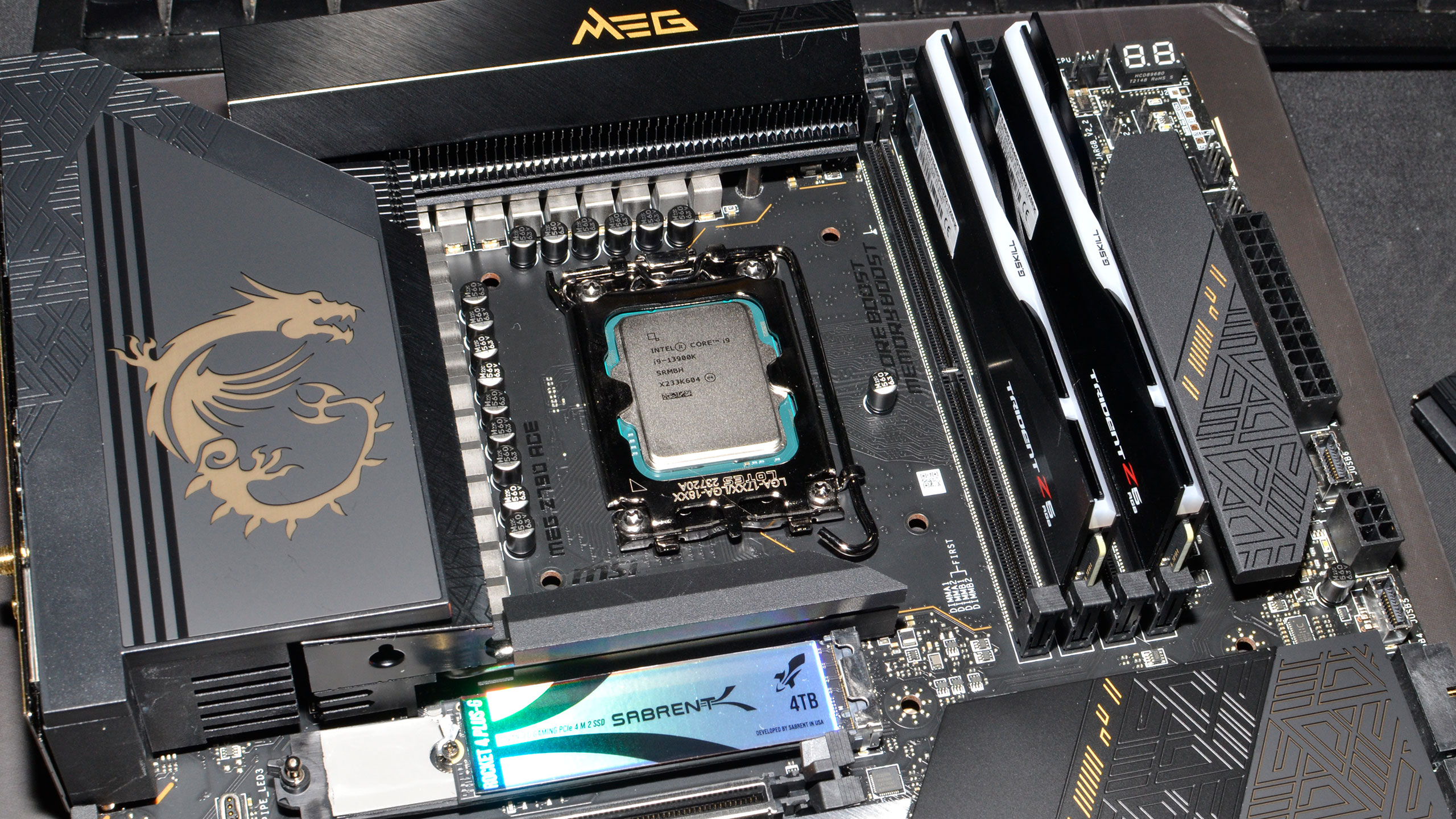
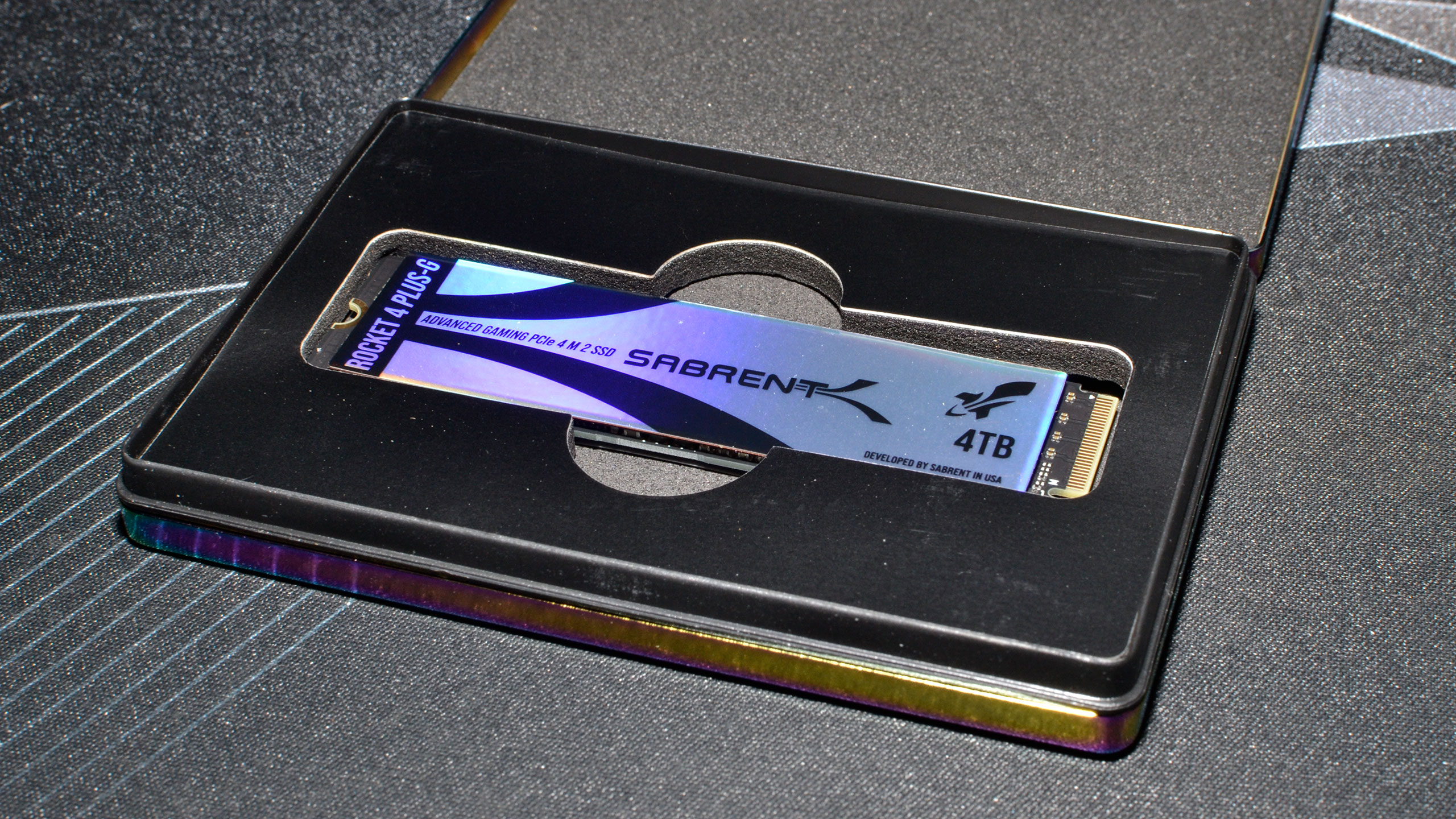
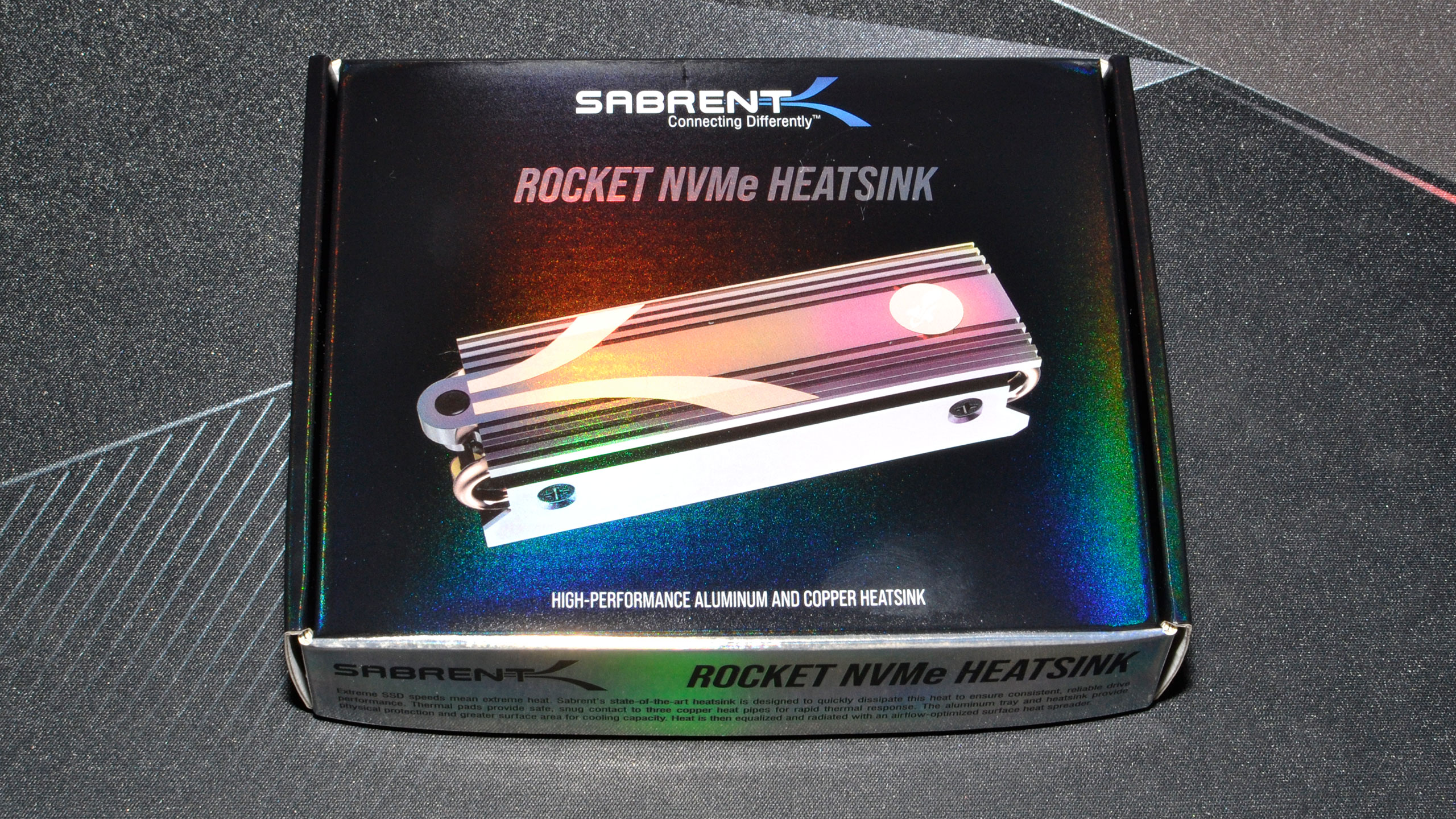


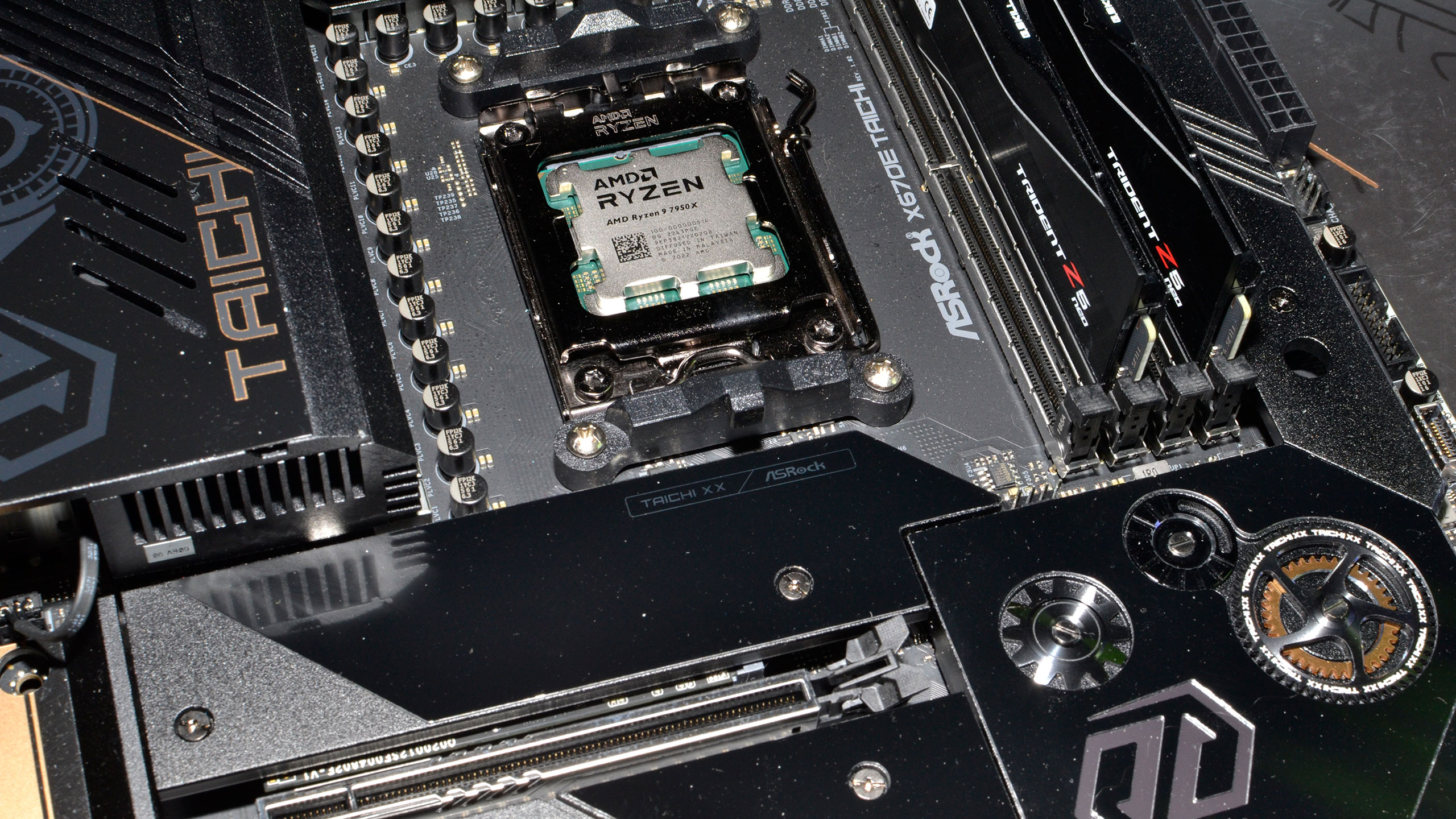
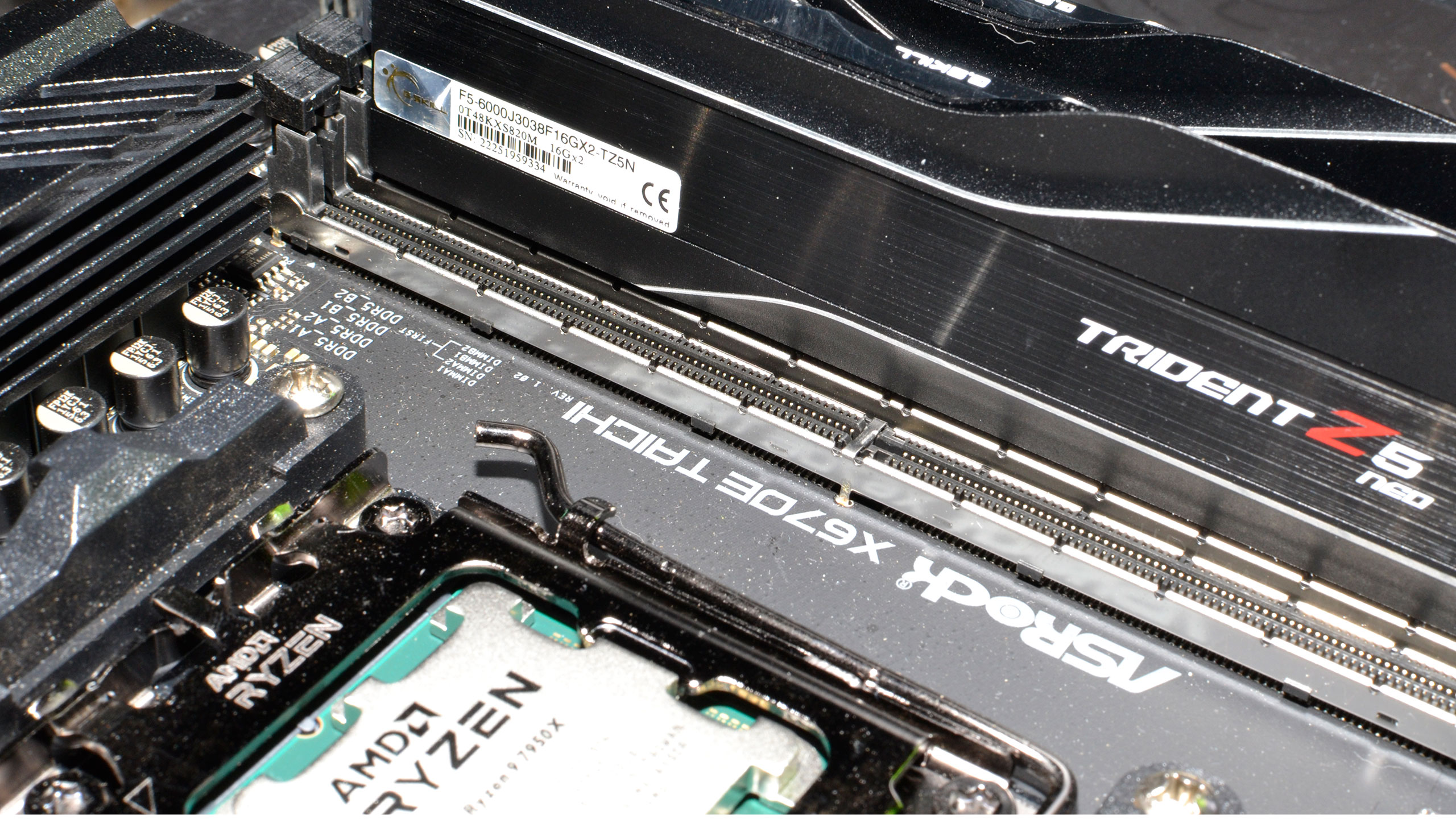
Our PC is hooked up to a Samsung Odyssey Neo G8 32, one of the best gaming monitors around, allowing us to fully experience some of the higher frame rates that might be available. G-Sync and FreeSync were enabled, as appropriate. As you can imagine, getting anywhere close to the 240 Hz limit of the monitor proved difficult, as we don't have any esports games in our test suite.
We run Windows 11 22H2, with InControl used to lock our test PC to that major release for the foreseeable future (though critical security updates still get installed monthly). Our new test PC includes Nvidia's PCAT v2 (Power Capture and Analysis Tool) hardware, which means we can grab real power use, GPU clocks, and more during all of our gaming benchmarks. We'll cover those results on our page on power use.
Get Tom's Hardware's best news and in-depth reviews, straight to your inbox.
- MORE: Best Graphics Cards
- MORE: GPU Benchmarks and Hierarchy
- MORE: All Graphics Content
Current page: Sapphire RX 7700 XT Pure Review
Next Page Sapphire RX 7700 XT Pure: 1440p Ultra Gaming Performance
Jarred Walton is a senior editor at Tom's Hardware focusing on everything GPU. He has been working as a tech journalist since 2004, writing for AnandTech, Maximum PC, and PC Gamer. From the first S3 Virge '3D decelerators' to today's GPUs, Jarred keeps up with all the latest graphics trends and is the one to ask about game performance.
-
hotaru.hino Reply
I would argue a lot of people, if they have the means to buy almost any car they want, will choose one car over another based on its color. Or even ask the dealer for a specific color if it's available.PEnns said:I don't know about you, but the majority of thinking people don't buy a car based on its color!!
About half the reason why I jumped on the motorcycle I bought a while ago was because being a Kawasaki, it didn't come in that obnoxious Kawasaki green (the other half was I was ready to move on from my first bike which it was replacing.) And I would say a non-trivial reason why I chose the car that I did was because I wanted to have matching colors with my bike.
Is it important in the grand scheme of things? No. But I had the choice. And if people didn't really care about color, why do you think that option exists? May as well go the Ford way and paint all cars black; it'll save them a lot in manufacturing. -
Good looks aside, i fear its pathetic 12GB VRAM renders it completely useless for modern gaming.Reply
-
punkncat Wow, future locked thread.Reply
For my own part, these cards are a bit of fresh air in the current market. It still stands that the MSRP on this, the 7800, and it's 6xxx forefathers is a bit confusing from a customer standpoint. For my own part, I love to see and often pick graphics cards as well as other components based solely on them NOT having unicorn puke spewing out of them. -
Geef Quick piece of unrelated info: I bought a ASRock Phantom Gaming Radeon RX 7800 XT 16GBReply
It is a very quiet card. Even while playing Starfield for several hours at a time. Lots of time tests. ;) -
JarredWaltonGPU Reply
It's why the ability to change your RGB lighting options exists. Default might be rainbow on most cards/mobos, but it's simple enough (usually) to set it to pure red, green, blue, or some other color. That's the crux of the issue. Adding lighting, but limiting it to a single color that can't be changed, is going half-way on a feature.punkncat said:Wow, future locked thread.
For my own part, these cards are a bit of fresh air in the current market. It still stands that the MSRP on this, the 7800, and it's 6xxx forefathers is a bit confusing from a customer standpoint. For my own part, I love to see and often pick graphics cards as well as other components based solely on them NOT having unicorn puke spewing out of them. -
punkncat ReplyJarredWaltonGPU said:It's why the ability to change your RGB lighting options exists. Default might be rainbow on most cards/mobos, but it's simple enough (usually) to set it to pure red, green, blue, or some other color. That's the crux of the issue. Adding lighting, but limiting it to a single color that can't be changed, is going half-way on a feature.
I don't disagree, per se, but also that this is a design decision based on what the manufacturer wanted to put forth in regard to their vision of the look they were going for. I feel that it is nice to have choices on this and that manufacturers are giving them, even when spartan.
edit- I would also add that in order to control RBG often involves downloading a companion app that may or may not play right with other lighting apps and so on. Without doubt, open and eating resources albeit a small amount, but have a couple of those running for this and that part to light the way you want adds up. -
AgentBirdnest I would have thought they'd give it blue lighting... cuz, ya know... sapphires. : PReply
I really love those fan blades. Cool angular shapes. Too bad I'd never ever see it when the computer is on, though. : P
I love silence... I'd pay an extra $30, even $50, for a card that has quieter cooling. But between a $480 7700XT with excellent cooling, and a $500 7800XT with adequate cooling... I'd pick the latter. AMD prices the 7700XT so weirdly...
That's awesome! Congrats! : )Geef said:Quick piece of unrelated info: I bought a ASRock Phantom Gaming Radeon RX 7800 XT 16GB
It is a very quiet card. Even while playing Starfield for several hours at a time. Lots of time tests. ;)
I feel like ASRock has really stepped up their game over the last couple of years, and makes some of the most compelling components now. -
nitrium It's also about twice as fast as the RTX 2060 (and costs $100 more than the 2060's launch price), and twice as fast as GTX 1080.Reply
I see neither of those cards in your charts. I know that the RTX 4060Ti is not (quite) twice as fast as an RTX 2060 in many (most?) games. The RTX 4070 is the first 4000 series card that gets there. -
wingfinger I don't care for lighting effects myself.Reply
What I don't like is that marketing and management probably think that they are providing an exciting and desirable product because of the lighting effects, instead of providing a reliable, great performance for the price product.
On a similar note, do people still buy graphics cars be because they are overclocked? I would buy an overlocked card, only because I don't want the lowest bin GPU possible. But, I would be looking for a mild overclock, never a high overclock.